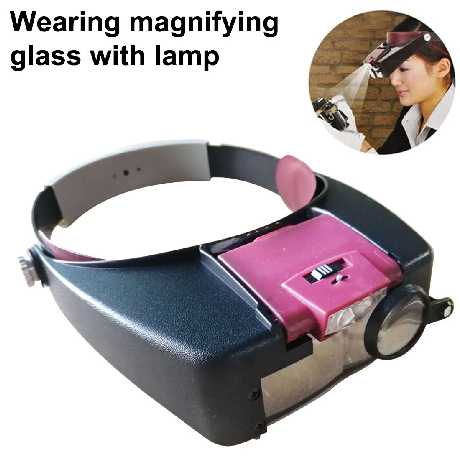-
Posts
5,928 -
Joined
Content Type
Profiles
Forums
Events
Blogs
Gallery
Everything posted by fredk
-

fredk - this is in your playground ;-)
fredk replied to Constabulary's topic in Leather Sewing Machines
Thanks for thinking of me Buts its sold maybe -
Smashed down tight the head of a ready-rivet would be no higher than what had been in. Plus the head would be a smoother surface than the edges of what had been there
-
On rebuilding' I would use brass double headed ready-rivets
-
I use small electrical side-cutters to crush the sides of the hollow rivet inwards. Often this works so I can pull the fitting off the leather quite easily. Or the side-cutters will be needed to hold the rivet and I drill the rivet. I usually manage to get the side-cutters inbetween the fitting and the strap, or between the peened over end of the rivet and the strap
-
Questions with a multitude of answers Size of punch first, for a 4mm tongue I do a 4mm wide hole, but I use an oval hole punch so the hole is 4mm x 5mm The distance between holes can be what you like; on a lady's belt I go about 12mm between ends, about 16mm between centres, on a man's belt I go 16mm between ends, about 20mm between centres. On a shield strap I go 20mm between ends, about 24mm between centres How much billet to leave from the end to the first hole? whatever you like or whatever looks good. About 70 to 100mm maybe
-
If you have a problem with lighting your work 1. I have a couple of poseable lights, on each side of the bench, each with a very bright bulb. I use day-light colour balanced LED bulbs, about 20w, equivalent to about 100 -120w incandescent bulb. I can angle these lights anyways on to my work to eliminate any shadows 2. very occasionally I use a small fore-head light. Its a small LED torch which you can wear on your fore-head using its elastic strap. You can buy these for a couple of $$. Mine cost me £1 and I have several lying around the place. It gives a very bright light for all of its small size 3. You can buy an 'Opti-Visor' with a light and magnifiers built into one visor. These are more expensive, from about $10 upwards.
-
I reckon the leather is just too dry. Try applying some pure neats foot oil and working the leather in your hands to loosen it up somewhat
-

A Little Something For My 1911
fredk replied to tsunkasapa's topic in Gun Holsters, Rifle Slings and Knife Sheathes
That looks very tidy indeedy -

Odd stitch on the piping of an old LV Saumur bag
fredk replied to unionattic's topic in Leather Sewing Machines
-

Odd stitch on the piping of an old LV Saumur bag
fredk replied to unionattic's topic in Leather Sewing Machines
As usual; two names for the same thing, -

Odd stitch on the piping of an old LV Saumur bag
fredk replied to unionattic's topic in Leather Sewing Machines
That is a 'cable' stitch. Quite common on fabric items where strength of the sewing is needed. It can only be done by hand sewing -
When I first started in this leatherwork lark Resolene was a great sealer but a few years ago I noticed that my newer stock of it would never seal anything so I tried Astonish and have been using it since
-
I go 6x for an X stitch, but it depends on how tight the X is. A tight X might take 8x Too many bludy Xs ! If the stitches are close then maybe about 8 times, if they are further apart maybe 6 times will do. But only use no more than 2m (6ft) at a time
-
Can't tell you why right now. I need to think a thunk on it, but here's a fix 1. get a cheap airbrush 2. get some floor 'polish' called Astonish*, which is actually a water thin acrylic varnish 3. spray several, about 3, coats of Astonish on your piece. First coat, go lightly, let soak in and dry, 2nd coat a bit heavier and let dry, then 3rd coat as heavy as the 2nd coat 4. by this third coat everything should be sealed. Further coats will do more sealing but actually start to give your piece a shine. *Astonish, this floor 'polish' has numerous names. No need to buy the original Pledge product which is very expensive. I gat Astonish in Home Bargains for about £1 per 1L or 750ml bottle
-
I've thinked a thunk on this and tbh I can't thinkafy of anything different than your own suggestion. That colour would really suit a 1960s / early 70s bag with fringe. One of my sisters (I had 4, all older than me) had a hand or shoulder bag that was a rust colour, with a fringe on the flap which came all the way down over the front and the fringe hung down lower. I dunno what leather was used tho. This was about 1970 to '74 - ish.
-

leatherman "sheath"
fredk replied to Spyros's topic in Gun Holsters, Rifle Slings and Knife Sheathes
Good One! -
Something I do with friends on other forums; be a 'postal buddy'. Someone posts a thing to me in UK then I post it onwards if the original seller won't post to my 'buddy'. My 'postal buddy' pays for the item and s&h to me, then pays me what it costs to post onwards Perhaps someone in the US could get the book and then post it on-wards.
-

Fly Fishing Wallet
fredk replied to WalterF's topic in Purses, Wallets, Belts and Miscellaneous Pocket Items
1. That is a really nice piece of work. Really nice basketweave job and that triangle border stamp looks just right for it 1a. one thing I would do differently, is to end the fleece before the fold over closure flap. Maybe put a thin piece of skiver leather on that part 2. Good idea chuck. I remember losing a lot of fishing equipment to Neptune. Sea fishing here, but wallets like this are used for flies for sea trout and sea bass. 3. My new selling agent has these on my list of things to produce for her. Your job inspires me to get a shufty on* with making a few. They'll be different to yours tho 3a. I like your closure lock. I'll be using a marine grade lift-the-dot fitting on mine. * a shufty on = an Ulsterism meaning to 'just get on with it', set to to actually doing the job. Not to be confused with the English meaning of to look quickly' -
Must be a country thing; all the SB studs I have and use have a straight post Like this;
-
PS. Once upon a time the UK old 1/2p, old 1p and decimal 1p and 2p were made of bronze. My father, who was a cabinet maker, used to take one of these coins and by drilling and filing made key escutcheon plates for antique furniture he used to restore. Its a simple job. Now-a-days these coins are steel coated in copper and not so suitable. I think you'd need to go back to pre-1992 to get fully bronze coins. I guess you'd only have the very old 1c coin in bronze. Modern ones are made in a zinc alloy afaik
-
I think its a Sam Brown stud going thru a key escutcheon plate. You can get them in a quadzillion of sizes, shapes & materials eg, just a few examples
-
That is one grand looking job there. You embarrass me, the back on my stool seat has some duck/duct/gaffer tape holding part of it together, I must recover that in leather. Its such a simple job compared to what you've done.
-
An aside; Henry Ford chose to use Chrome-Vanadium Steel for the chassis (frame) members on his Model T car where competitors were using mild steel supported by teak wood. The Ford T Chassis was known for its flexibility without breaking, its overall strength and lightness compared to the others. Over 100 years on original T chassis are still in use whereas chassis on the other cars have been changed many years ago
-
Some sellers are promoting a foot corn remover as a skiver. It uses razor blades https://www.ebay.co.uk/itm/233302066452?hash=item3651e30514:g:kEUAAOSwPkBadBzh It doesn't work
-

Scalloped leather trim, with and without dots needed
fredk replied to OldRedMule's topic in Suppliers
I found a one-off https://www.ebay.co.uk/itm/114999691410?hash=item1ac6840892:g:OGAAAOSw00phR2Yd



